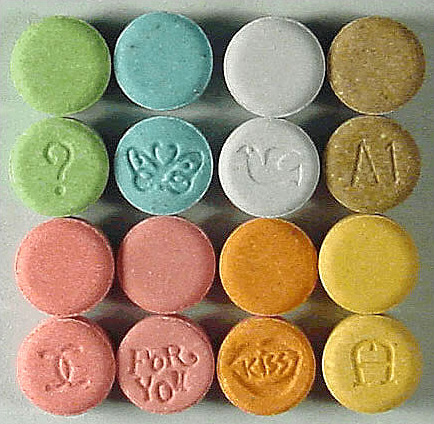5 Sedative Hypnotics, Psychotherapeutic Drugs, Psychedelics, and Hallucinogens
Introduction
Drugs in the sedative hypnotic, psychotherapeutic, hallucinogenic, and psychedelic categories are primarily used to treat insomnia, anxiety, depression, schizophrenia, and some addiction issues. Addiction issues carry a high risk of misuse and cause the user to experience physical and psychological problems that stem from their drug use.
Learning Objectives
- Understand and explain sedative hypnotics and psychotherapeutic drugs.
- Understand and explain hallucinogens.
- Describe the effects of sedative hypnotics, psychotherapeutic drugs, and hallucinogens on the brain and their impact on mood, behavior, sleep, anxiety, and depression.
- Explain how sedative hypnotics, psychotherapeutic drugs, and hallucinogens work in the body.
- Understand how sedative hypnotics, psychotherapeutic drugs, and hallucinogens are used and misused.
Image 5.1 – Woman Covering her Face with her Hands

Learning Content
Sedative Hypnotics and Psychotherapeutics
History and Background
Barbiturates were the first known sedative hypnotic. Barbiturates were used to treat anxiety, depression, and insomnia. Despite their addictive nature, they continued to be used more and more in the 1950s and 1960s. The use of these drugs from 1930 to 1960 accounted for many suicides, attempted suicides, accidental deaths, and misuse.
The benefits of psychotherapeutic drugs were discovered in the late 1940s and early 1950s with the development of lithium, chlorpromazine, and monoamine oxidase inhibitors. These drugs played a major role in changing the treatment of psychiatric patients as many state hospitals and institutions closed and drugs became an additional solution for treating people with mental illness.
Sedative Hypnotics and Psychotherapeutics’ Effects on the Body
Sedative hypnotics and psychotherapeutics are best brought into the body orally or through intravenous injection.
Sedative Drugs:
- Benzodiazepines are approved for short term use in treating anxiety and sleep disorders. They are highly addictive and can only be used for up to six weeks.
- Common Brand Names: Halcion, Estazolam, and Quazepam
- Barbiturates were once used to treat sleep problems and to encourage relaxation but because of risk of overdose barbiturates are used today as anticonvulsants and general anesthetics.
- Common Brand Names: Luminal, Seconal, Fiorinal
- Nonbenzodiazepines are used to treat sleep problems. These drugs are highly addictive and can only be used for a short period of time. These drugs are very similar to Benzodiazepines.
- Common Brand Names: Ambien and Lunesta
- Methaqualone is a sedative and a hypnotic medication, relaxing you and inducing sleep. Methaqualone is not really prescribed anymore because of the high risk of misuse.
- Common Brand Names: Quaalude
Psychotherapeutic Drugs:
- Benzodiazepines are approved as anti-anxiety agents as well as sleep-aid medications.
- are antidepressants that treat depression, major depression and bipolar disorder.
- Common Brand Names: Paxil, Prozac, Zoloft, Lexapro
- Antipsychotics are used to treat schizophrenia; chlorpromazine was the first antipsychotic drug that was introduced over 60 years ago and is still being used today in treatment.
- Common Brand Names: Tindal, Acezine, Bromidal
- Mood Stabilizers are drugs used to treat bipolar disorder and other mood disturbances related to mania and depression. One of the first mood stabilizers introduced to the drug market in the 1940s was Lithium. From 1940-1980 several mood stabilizers were introduced to the drug market and are still in use today.
- Common Brand Names: Latuda, Abilify, Risperdal
Check Your Knowledge
How Sedative Hypnotics and Psychotherapeutics Work in the Body
Sedative hypnotic drugs enhance the effects of the neurotransmitter GABA in the brain. When prescribed in high doses, sedative hypnotics can repress the central nervous system and cause body systems to shut down. Short-term use of these drugs is encouraged because these drugs have high risk of misuse.
Psychotherapeutics alter neurotransmitters in the brain. People taking these drugs by prescription report difficulty feeling emotion once the drug has accumulated in their body. Users complain of being unable to cry, laugh, or experience feelings.
Side effects associated with use of both of these drugs include nervousness, rapid heart rate, chest pains, dizziness, headaches, and irritability.
Use, Misuse, and Overuse
Sedative hypnotics are often used in conjunction with recreational drugs, making the risk of misuse a concern. Many sedative hypnotics are controlled substances because of the high risk of misuse and concerns with long term use. There is risk with use and concern with misuse when not taken as prescribed.
Lifespan Considerations
Use of these drugs needs to be monitored by a healthcare provider. The risk of misuse with these drugs is high and therefore careful monitoring of use is important.
Critical Thinking
Think about all of the mental health concerns mentioned in this section so far; anxiety, depression, insomnia, Bipolar disorder and schizophrenia.
Why are drugs used to treat these mental health conditions? What other things can people experiencing mental-health issues engage in as part of their treatment plan?
Hallucinogens
Image 5.2 – Images of Psilocybin Mushrooms, LSD, and Salvia Divinorum Hallucinogenic Compounds

History and Background
Throughout history, hallucinogens and psychedelics have been used in ritual and religious ceremonies. Recently, use of these drugs has been centered around recreational use to help people with stress, to have fun, and have spiritual experiences. and other manufactured hallucinogens and psychedelics first became widely used in the U.S. and Europe in the 1960s when people used them to feel pleasure, alter their mind, or experience a “”. PCP or phencyclidine, is a dangerous drug that was originally developed in the 1950s as a general anesthetic for surgery.
Hallucinogens’ Effects on the Body
Hallucinogens can be brought into the body through injection or inhalation, or intranasally, conjunctivally (via eye drops), or orally by placing the pill or blotter paper under the tongue.
There are two forms of hallucinogens: classic hallucinogens and dissociative hallucinogens. Both cause hallucinations, which are images or sensations that are not real; dissociative hallucinogens can also cause the user to feel disassociated from their body or environment. Some hallucinogens are extracted from mushrooms and some are man-made.
Classic Hallucinogens:
- LSD is one of the most powerful mind-altering drugs. It is a white or clear odorless material made from lysergic acid. For more information see: LSD Fact Sheet
- DMT is a chemical found in Amazonian plants or manufactured in a lab. It is a white powder that has a crystal look. Another name for DMT is Dimitri.
- Mescaline also known as Peyote comes from a cactus that contains mescaline. Mescaline can also be made in a lab. Slang names for mescaline include cactus, button and mesc.
Dissociative Hallucinogens:
- PCP is also known as Phencyclidine. PCP was first developed as a general anesthetic drug that was used in surgeries. There were serious side effects with use and PCP is no longer in use medically. PCP is available in tablets, capsules, liquid and white crystal power. Slang names for PCP include Angel Dust, Hog, Love Boat and Peace Pill.
- Ketamine is an anesthetic used in surgery for animals and humans. Ketamine is a legal drug but it is widely available illegally and typically comes from veterinary offices. It is available as a liquid used with an IV, but is mostly sold as pills or in powder form. Slang names for Ketamine are K, Special K and Cat Valium.
- DXM is a cough suppressant and the main mucus clearing ingredient in cold and cough medicine available over-the-counter. For more information see: Drug Fact Sheet: DXM
Critical Thinking
Read the following article on DXM and become familiar with the risk of use. Dextromethorphan/DXM Overdose: Dangers of Abusing Cough Medicine
Reflect on these questions as you think about the misuse of a common over-the-counter drug. What are the risks associated with the use of DXM? Why is DXM misused by young people? What “high” are young people trying to achieve by using DXM?
Other Hallucinogens:
- MDMA is chemically similar to hallucinogens and stimulants. It is a synthetic drug that alters mood and perception. An added risk to this drug is that it often contains other drugs, such as cocaine, ketamine, methamphetamine, and bath salts. These combinations increase the risk of use, as individuals may not be aware of what they are ingesting. Slang names used for MDMA are Molly and Ecstasy. Review this MDMA information: 10 Facts About MDMA
Image 5.3 – Colorful Ecstasy Pills

Critical Thinking
After reviewing all of the hallucinogens described above, what are the primary concerns you have with using these drugs? If you had to tell a friend about one of these drugs, which one would it be and why would you want to share the information with them?
How Hallucinogens Work in the Body
Hallucinogens are substances that tend to alter perceptions, thought, or mood. Hallucinogens are likely to cause changes in mood or in thought and provide a false sensation that has no basis in reality. They work to disrupt the communication between the brain chemical systems throughout the brain and spinal cord. Some hallucinogens can interfere with serotonin production in the brain. When serotonin levels are impacted because of hallucinogen use, mood is altered, sensory perception is not as sharp, and users can feel sleepy, hungry, and hot. When hallucinogens are taken, their effects can begin within 20 to 90 minutes and can last for up to 12 hours. While users can experience hallucinations, taking this type of drug can also cause an increase in heart rate, nausea, changes in sense of time, loss of appetite, dry mouth, and sleep problems.
Use, Misuse, and Overuse
Hallucinogens have been used for religious reasons, but are also used as cough suppressants and anesthetics. Many hallucinogens are not addictive but they do cause tolerance so larger amounts of the drug would be needed over time to achieve the same “trip.”
Lifespan Considerations
There are many known risks with hallucinogen use: bizarre behaviors, coma, poisoning that can lead to death, suicide concerns, and death from overdose. Certain hallucinogens are addictive, and individuals can develop tolerance to the drugs they are taking. Long-term impacts can include persistent psychosis and flashbacks.
Supplemental Resources
Drug Enforcement Administration. (2020). Drug Fact Sheet: Ketamine. Retrieved July 28, 2021, from https://www.dea.gov/sites/default/files/2020-06/Ketamine-2020_1.pdf
Drug Enforcement Administration. (2020). Drug Fact Sheet: Salvia divinorum. Retrieved July 28, 2021, from https://www.dea.gov/sites/default/files/2020-06/Salvia%20Divinorum-2020_0.pdf
Liechti M. E. (2017). Modern clinical research on LSD. Neuropsychopharmacology: Official publication of the American College of Neuropsychopharmacology, 42(11), 2114–2127. https://doi.org/10.1038/npp.2017.86
National Institute on Drug Abuse. (2019, April 22). Hallucinogens drugFacts. U.S. Department of Health and Human Services, National Institutes of Health. Retrieved July 28, 2021, from https://nida.nih.gov/publications/drugfacts/hallucinogens
National Institute on Drug Abuse. (2020, June 15). MDMA (ecstasy/molly) drugFacts. U.S. Department of Health and Human Services, National Institutes of Health. Retrieved July 28, 2021, from https://nida.nih.gov/publications/drugfacts/mdma-ecstasymolly
National Institute on Drug Abuse. (2021, July 16). Hallucinogens and dissociative drugs research report. U.S. Department of Health and Human Services, National Institutes of Health. Retrieved September 6, 2021, from https://nida.nih.gov/publications/research-reports/hallucinogens-dissociative-drugs/director
Van Havere, T., Vanderplasschen, W., Lammertyn, J., Broekaert, E. & Bellis, M. (2011). Drug use and nightlife: More than just dance music. Substance Abuse Treatment, Prevention, and Policy, 6. https://doi.org/10.1186/1747-597X-6-18
References
Drug Enforcement Administration. (2020, June 16). Ecstasy monogram.jpg. Wikimedia Commons. Retrieved September 7, 2021, from https://commons.wikimedia.org/w/index.php?title=File:Ecstasy_monogram.jpg&oldid=426688409
SSRI's are Selective Serotonin Reuptake Inhibitors
Lysergic acid diethylamide
Also known as a psychedelic experience or an acid trip.



